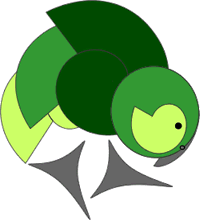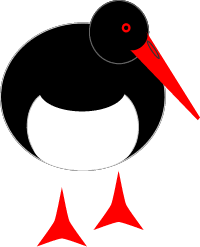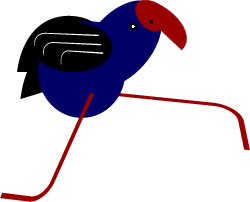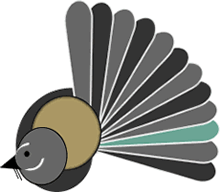

Earthlings Organic Charity Prints.
As part of our collection weve created some unique bird prints which have been carefully hand printed using silk screens and eco-friendly inks.
For every printed item sold , earthlings will donate $1 to the Royal New Zealand Forest and Bird Society.
We've chosen the Kakapo because it is the rarest parrot in the world.
The Chatham Island oystercatcher was chosen because they are also one of New Zealands most endangered species.
We also chose the fantail the pukeko and the morepork because they are well recognised birds that little kiwis will know and love.
Kakapo: parrot of the night
Did you know that there are only 86 kakapo left in New Zealand? The kakapo is the rarest parrot in the world. Its flightless, its the worlds heaviest parrot, it's possibly the oldest living bird and it has a subsonic mating boom that can travel several kilometres!
Kakapo are the heaviest parrots in the world with some males weighing over 2 kg! Although it cannot fly, it is good at climbing trees. The birds are herbivores and eat variety of foods such as roots, leaves and fruit . kakapo can live for over 90 years!
"The kakapo is a bird out of time. If you look one in its large, round, greeny-brown face, it has a look of serenely innocent incomprehension that makes you want to hug it and tell it that everything will be all right, though you know that it probably will not be." Douglas Adams, 1990.
Threats to the Kakapo:
Most devastating of all to its survival was the introduction of predators such as rats, cats and stoats. In ancient history, its only endemic predator was a giant eagle (now extinct) and it developed the habit of nesting, rearing and feeding its young on the ground. This nesting behaviour made its eggs and chicks easy prey to introduced mammalian predators, especially cats.
We hope you like our prints and will be adding more birds, plants and animals to our printed collection over the coming months.
The Chatham Island oyster catcher:
The Chatham Island oyster catcher owes Its very high risk of extinction to its very small population-only 142 birds in 1998. It is the most threatened oystercatcher species in the world.
In comparison, the variable oystercatcher, that we see along the coast of mainland New Zealand, has a population of 4500 birds.
The inability to produce enough chicks has prevented growth of the Chatham Island oystercatcher population.
* Information sourced from the Department of Conservation
For every printed item sold , earthlings will donate $1 to the Royal New Zealand Forest and Bird Society.
We've chosen the Kakapo because it is the rarest parrot in the world.
The Chatham Island oystercatcher was chosen because they are also one of New Zealands most endangered species.
We also chose the fantail the pukeko and the morepork because they are well recognised birds that little kiwis will know and love.
Kakapo: parrot of the night
Did you know that there are only 86 kakapo left in New Zealand? The kakapo is the rarest parrot in the world. Its flightless, its the worlds heaviest parrot, it's possibly the oldest living bird and it has a subsonic mating boom that can travel several kilometres!
Kakapo are the heaviest parrots in the world with some males weighing over 2 kg! Although it cannot fly, it is good at climbing trees. The birds are herbivores and eat variety of foods such as roots, leaves and fruit . kakapo can live for over 90 years!
"The kakapo is a bird out of time. If you look one in its large, round, greeny-brown face, it has a look of serenely innocent incomprehension that makes you want to hug it and tell it that everything will be all right, though you know that it probably will not be." Douglas Adams, 1990.
Threats to the Kakapo:
Most devastating of all to its survival was the introduction of predators such as rats, cats and stoats. In ancient history, its only endemic predator was a giant eagle (now extinct) and it developed the habit of nesting, rearing and feeding its young on the ground. This nesting behaviour made its eggs and chicks easy prey to introduced mammalian predators, especially cats.
We hope you like our prints and will be adding more birds, plants and animals to our printed collection over the coming months.
The Chatham Island oyster catcher:
The Chatham Island oyster catcher owes Its very high risk of extinction to its very small population-only 142 birds in 1998. It is the most threatened oystercatcher species in the world.
In comparison, the variable oystercatcher, that we see along the coast of mainland New Zealand, has a population of 4500 birds.
The inability to produce enough chicks has prevented growth of the Chatham Island oystercatcher population.
* Information sourced from the Department of Conservation









